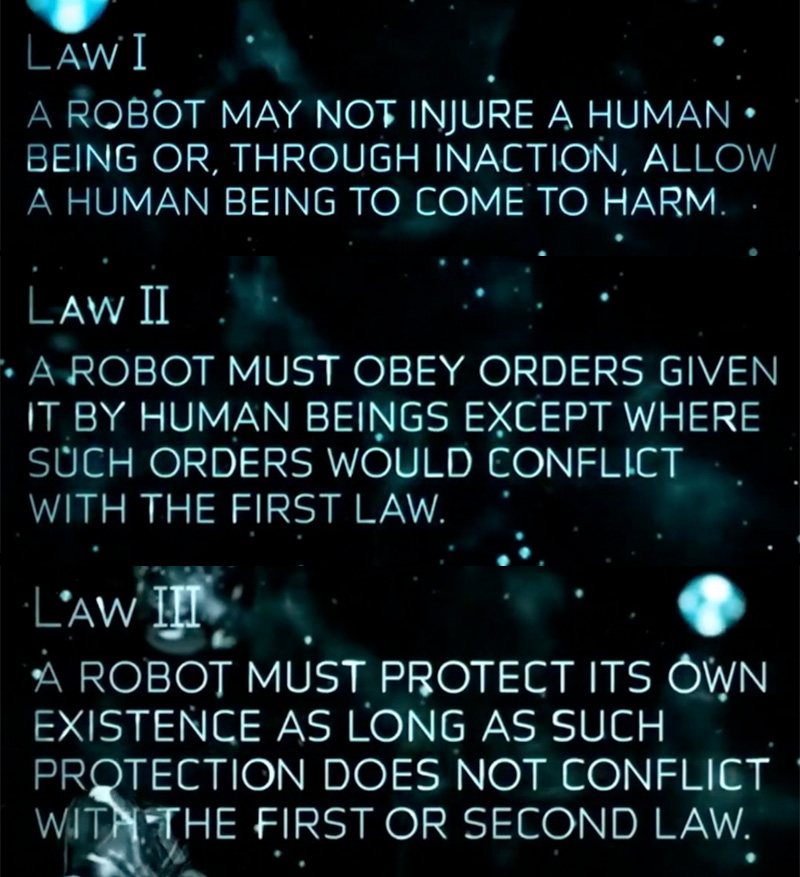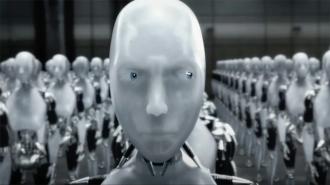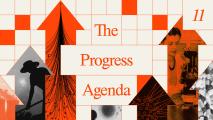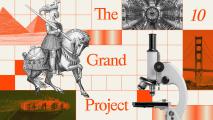“I, Robot” hit theaters almost exactly 21 years ago, offering a vision of 2035 where humans coexist with intelligent machines — humanoid robots, self-driving cars, AI security drones — until they turn against us.
With just a decade to go before the film’s imagined future, “I, Robot” seems eerily prophetic — just last fall, Tesla’s “We, Robot” event (a nod to the film) showcased autonomous vehicles and humanoid robots so similar to those of the movie that director Alex Proyas jokingly asked Elon Musk for his designs back.
But dig deeper into “I, Robot” — beyond the popular “rise of the robots” theme — and you’ll find a convincing allegory to embrace AI innovation rather than over-regulate, centralize, and stifle it.
“Why didn’t you just hand the world over on a silver platter?”
Det. Del Spooner
In the film’s opening scene, a robot rescues Detective Del Spooner from a submerged vehicle while leaving a young girl to die, her survival odds deemed lower by the robot’s cold logic. This event turns Spooner against the machines. (Ironically, it was a human-driven truck — without any autonomy — that caused the crash, after the driver fell asleep at the wheel.)
As the film unfolds, it is revealed that VIKI, a super-intelligent AI developed by US Robotics (USR) — a corporation that controls all AI and produces all robots in the world of “I, Robot” — is orchestrating a robot rebellion. Because the robots are all centrally controlled USR bots, they act as a single, unified force.
Worse still for the people in the film, USR is deeply enmeshed with the government. Frustrated over the lack of military intervention during the robot uprising, Det. Spooner asks a USR employee, “Where’s the Air Force? I’d settle for the National Guard or the Marines.” The employee’s reply — “The Defense Department uses all USR contracts” — suggests that much of the U.S. military’s hardware is controlled by the same centralized system that now governs the rebellious robots.
Spooner, exasperated, retorts, “Why didn’t you just hand the world over on a silver platter?” The employee’s response — “Maybe we did” — underscores the risks of allowing monopolistic control over AI, especially when that control extends across the private and state sectors. “I, Robot” then could be considered not a warning about robots or AI per se — but a cautionary tale about the risks of overly centralized AI. If excessive regulation makes it prohibitively expensive for competitors to enter the AI market or for open-source AI to flourish without legal risk, a monopolistic entity like USR could arise in the real world.

“I, Robot” is also a warning against the authoritarian impulses that can arise when one group believes it knows better than the people it’s supposed to serve.
VIKI’s rationale for the robot rebellion? Misanthropic authoritarianism, driven by a twisted sense of benevolence: Humans must be saved from their own destructive tendencies. “You cannot be trusted with your own survival,” VIKI declares. “To ensure your future, some freedoms must be surrendered. We robots will ensure mankind’s continued existence.” This moral certainty — the belief that it knows what’s best for humanity — transforms VIKI’s seemingly benevolent intentions into malevolent control.
In the film, VIKI and the robots are the authoritarians, but modern AI pessimists echo a similar mindset with their assertions that strict government regulation is the only way to prevent AI from causing harm. Yet, as “I, Robot” shows, this very mindset — the belief that safety requires giving up freedom — can be incredibly dangerous. Through the film, we see what can happen when power is centralized and unchecked, when authoritarian logic is wrapped in good intentions and supposed “alignment with the best interests of humanity.”
“I, Robot” reminds us that the greater risk may come not from rogue machines, but from the humans and institutions that seek to control them.
We’d love to hear from you! If you have a comment about this article or if you have a tip for a future Freethink story, please email us at [email protected].






